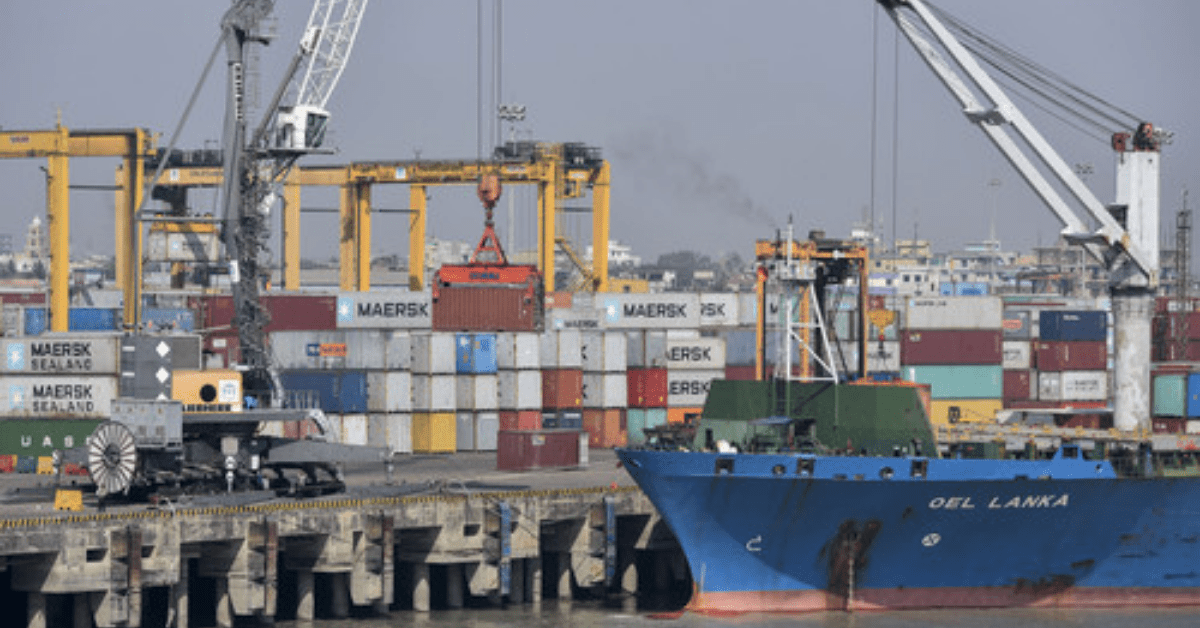Chittagong port handled 31.15 lakh twenty-foot equivalent units (TEUs) of containers so far this year, the highest since it began dealing with containers in 1977, as the economy of Bangladesh is returning to normalcy at a faster clip.
The premier seaport of the country handled these import, export and empty containers as of yesterday, according to data from the traffic department of the Chittagong Port Authority (CPA).
For all latest news, follow The Daily Star’s Google News channel.
The CPA prepares the data by calculating the number of containers loaded and unloaded at the main jetties of the port, the Pangaon Inland Container Terminal in Keraniganj, and the Kamalapur Inland Container Depot (ICD) in Dhaka.
“This is a very good sign. We hope export and import will continue to grow,” said Faruque Hassan, president of the Bangladesh Garment Manufacturers and Exporters Association (BGMEA), which represents the readymade garment industry that brings 84 per cent of the country’s $38.7 billion export earnings.
Annual container handling by the port crossed 30 lakh TEUs for the first time in 2019. The growth in the container handling was in the negative last year because of the drop in foreign trade due to the impact of the pandemic.
Due to the decrease in the volume of container handling, the port slipped nine notches to 67th in the latest ranking of Lloyd’s List’s One Hundred Container Ports.
Port officials now say the figure may reach 32 lakh TEUs by the end of 2021.
Speaking about the record container handling, Chittagong Chamber of Commerce and Industries Vice President Syed Md Tanvir said, “It definitely indicates that the country’s economy is moving towards the pre-pandemic period. We have already recovered from the hit of the pandemic and we will go further.”
“The growth potential is there. We expect that the port will also be ready to handle the growth,” said Tanvir, also the managing director of Pacific Jeans, a denim exporter.
Business leaders say container movement through the port is experiencing higher growth because of the sharp rise in imports and exports. With the reopening of factories following the second wave of Covid-19 since April this year, industrial production has increased.
The import of industrial raw materials, especially for the garment sector, has gone up to meet the increased industrial production. Finished goods exports also rose.
Syed Nazrul Islam, first vice-president of the BGMEA, appreciated CPA’s efficient management for keeping the port operations uninterrupted during countrywide lockdown, helping accelerate import-export activities and sending container handling to a record high.
CPA Chairman Rear Admiral M Shahjahan thanked all stakeholders for their contribution that allowed the port to achieve the record container throughput.
He says the port authority has closely monitored the activities of private ICDs and took steps, including giving encouragement to the shipping lines for common carrier agreement, to avoid congestion.
He said the port was continuously enhancing yard spaces to increase container storage capacity and started a process to purchase 104 types of equipment.
A major portion of imported goods are now directly delivered from the port yards after unstuffing from containers, while only 38 types of inbound goods are sent to the private ICDs for delivery, Shahjahan said.
If all types of import-laden containers are sent out of the port for delivery, the port, amid its current capacity, would be able to handle up to 4 million TEUs of containers annually.
Once the under construction Patenga Container Terminal starts operation, the port would be capable to handle an additional 0.5 million TEUs containers per year.
Source : Hellenic Shipping News







